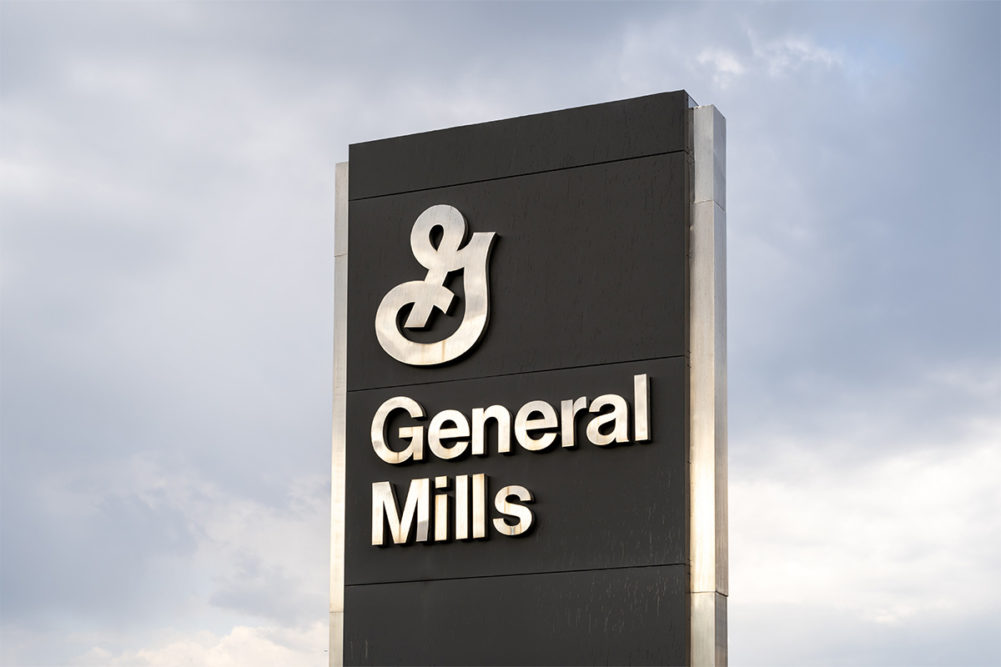MINNEAPOLIS — Continued input cost inflation and prudent purchasing behavior impacted General Mills in the first quarter, including its Blue Buffalo pet food and treat segment. The company reported its latest financial results on Sept. 20 for the three-month period ended Aug. 27.
“We delivered growth on the top and bottom lines in the first quarter amid an evolving external environment characterized by moderating inflation, stabilizing supply chains, and a resilient but increasingly cautious consumer,” said Jeff Harmening, chairman and chief executive officer of General Mills. “Looking ahead, we will remain focused on executing our accelerate strategy and driving strong growth for our brands. With confidence in our plans and our ability to adapt to continued change in the consumer landscape, we are reaffirming our guidance for fiscal 2024.”
Net sales for the company’s pet segment were flat year-over-year at $580 million due to lower volume. Segment operating profit for the pet segment was down 10% to $111 million. The company attributed this to increased costs for input, higher SG&A expenses and decreased volume.
For the dry pet food category, net sales grew in the mid-single digits, while wet pet food sales were flat over the quarter, and pet treat sales were down in double digits.
Caution among consumers — both the general population and pet owners — has resulted in some trading down from premium to value products and from large formats to smaller package sizes, according to Harmening. He also noted more pet parents are spending time away from home, which has impacted performance for General Mills’ wet food and treat segments.
“These short-term headwinds in premium pet food put pressure on our pet segment performance in Q1, due to Blue Buffalo’s premium positioning,” Harmening said. “While our flagship Life Protection Formula product line continued to drive double-digit retail sales growth, it was offset by declines in our Wilderness product line and portions of our wet food and treats portfolio, all of which are meaningfully more premium relative to Life Protection Formula dry dog food.”
The company plans to combat these challenges through its advertising efforts, which will focus on ingredient integrity, as well as optimizing its pack sizes and formats in specific channels.
“We are confident these actions will resonate with pet parents and further support Blue Buffalo’s position as the most loved and trusted natural brand in the category,” Harmening said in the company’s first-quarter earnings call on Sept. 20. “At the same time, we are not expecting a sharp change in the economic outlook for pet parents in the near term, and therefore we expect the more challenging category dynamics we’ve seen recently will remain a headwind to our pet segment performance through fiscal 2024.”
Overall, General Mills reported net sales growth of 4% to $4.9 billion, as well as organic net sales growth of 4%. Gross margin grew 540 basis points and accounted for 36.1% of net sales in the first quarter, and adjusted gross margin was up 50 basis points and accounted for 35.4% of net sales. Margin growth was attributed to favorable price realization and mix.
Operating profit fell 14% to $930 million over the quarter. General Mills’ operating profit margin came to 19%, down 400 basis points, and adjusted operating profit was $899 million, up 2%.
“As we started the year, we also outlined three factors — moderating inflation, a resilient yet increasingly cautious consumer, and a stabilizing supply chain — that will have a significant impact on our business in fiscal 2024,” Harmening said. “And through one quarter, these continue to be the most important external factors impacting our performance.”
Input cost inflation is projected to account for approximately 5% of total costs for the full fiscal year, including labor inflation that is expected to influence sourcing, manufacturing and logistics expenses.
Despite these anticipated challenges, General Mills reaffirmed its full-year fiscal 2024 guidance. Organic nets sales are expected to grow between 3% and 4%, and adjusted operating profit and adjusted diluted earnings per share are both expected to increase between 4% and 6%.
“General Mills’ ability to adapt to ongoing change in the operating environment is what has separated us from our competition over time, and particularly in recent years,” Harmening concluded. “I remain confident that we will continue to respond with agility to the needs of the short-term, while keeping our focus on our long-term strategic priorities.”
Read more about corporate strategy, financial performance, mergers and acquisitions on our Business page.


